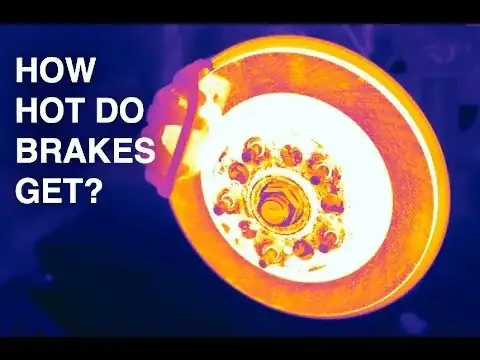Please never throw water at the wheels when you've driven for an extended time. Your brake discs may likely warp if they were hot. Your water reaches the outer face of the discs, so they will rapidly cool down. The inner side won't so the disc will easily warp. It may not be much, but warped discs are very annoying.
The wheels (ie. rim and tyre) will likely never reach 100C but 70C is not uncommon for tyres during a long drive in warm weather. The less pressure the tyres have, the hotter they will become. That's because the tyres constantly deform during driving, which causes the rolling resistance and tyre wear. Those are unavoidable, but the right tyre pressure minimises wear and fuel consumption, while keeping a safe amount of traction.
Brake discs and pads will get much hotter. When you've hit the brakes really hard, they can turn blue by annealing from that temperature. That hue means it's been at least 300C. Now that's a rather extreme situation, but it's not hard to get them over 200C when braking hard a few times. When driving normally, i'd expect discs to have an average temperature of around 70C. They're not near room temperature as you might expect. They're continuously fed with heat from braking, tyre friction, engine heat, etc. Braking hard a few times is enough to get them to 200C.
Recently, I had to brake from 160km/h to around 30 in a short time. I already used the brakes rather hard just before, and now I smelt the pads. So they got quite hot. The outer rim of the discs had a blue and yellow haze on them, indicating they had seen temperatures of at least 300C.
